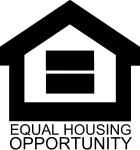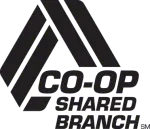If you've ever heard the term HELOC and thought maybe it was
the name of a virtual reality game, a cyber security software program or even a
covert military aviation plan - you're probably not alone. Fortunately, the
definition of HELOC isn't that complicated and learning more about it might be
to your benefit.
HELOC stands for home equity loan or line of credit -
something that allows you to borrow money using your home's equity as
collateral. This is like a second mortgage that turns equity into cash.
To begin, let's make sure you understand what equity means.
Equity is the difference between how much the home is
worth and how much you still owe on the house. Let's say you buy a house for
$150,000. You make a down payment of $20,000 and borrow $130,000. The day you
buy the house, your equity is the same as the down payment: $20,000.
Fast-forward five years. You have been making your monthly
payments faithfully, so you now owe $117,000. During the same time, the value
of the house has increased. Now it is worth $200,000. Your equity is the
difference between them: $83,000
Similarly, let's say you buy a house for $150,000. You make
a down payment of $20,000 and borrow $130,000. In five years your balance is
$117,000. But in this scenario, home prices fell. Now your home is worth
$105,000. But you still owe $117,000. Because the value of your home is less
than the amount you owe, you have negative equity and are not eligible for a
home equity loan.
Types of Home Equity Debt
There is a difference between home equity loans and home
equity lines of credit. Both are called second mortgages because they are
backed by your property. (Your property is collateral). Home equity loans and
lines of credit are repaid in a shorter period than first mortgages. Mortgages
are set up to be paid over 30 years. Equity loans and lines of credit often
have a repayment period of 15 years. Sometimes it is as short as five and as
long as 30 years.
A home equity loan is a lump sum that is paid off over a set
amount of time. There is a fixed interest rate and the same payment amounts
each month. Once you get the money, you cannot borrow further from the loan.
A home equity line of credit works like a credit card. It
has a revolving balance. A HELOC allows you to borrow up to a set amount for
the life of the loan. During that time, you can withdraw money as you need it.
As you pay off the principal, you can use the credit again like a credit card.
A HELOC gives you more options than a fixed-rate home equity loan. You can
remain in debt with a home equity loan. This happens if you pay interest and
not the principal.
Terms and Repayment
A line of credit often has an interest rate that changes
over the life of the loan. Payments vary based on the interest rate. You can't
add new debt during the repayment period. You must repay the balance over the
remaining life of the loan.
The draw period often is five or 10 years. And the repayment period often is 10 or 15
years. But each lender can set its own draw and repayment periods. A customer's
check, credit card or electronic transfer accesses a line of credit.
At Telhio, we try to make the process of understanding home equity loans, HELOC
and personal loans and mortgages as simple as possible. And we can start you on
the path of accessing your equity, making it easy for you to use those funds
for whatever you need or want!
Learn more at www.telhio.org/personal/home-equity.





